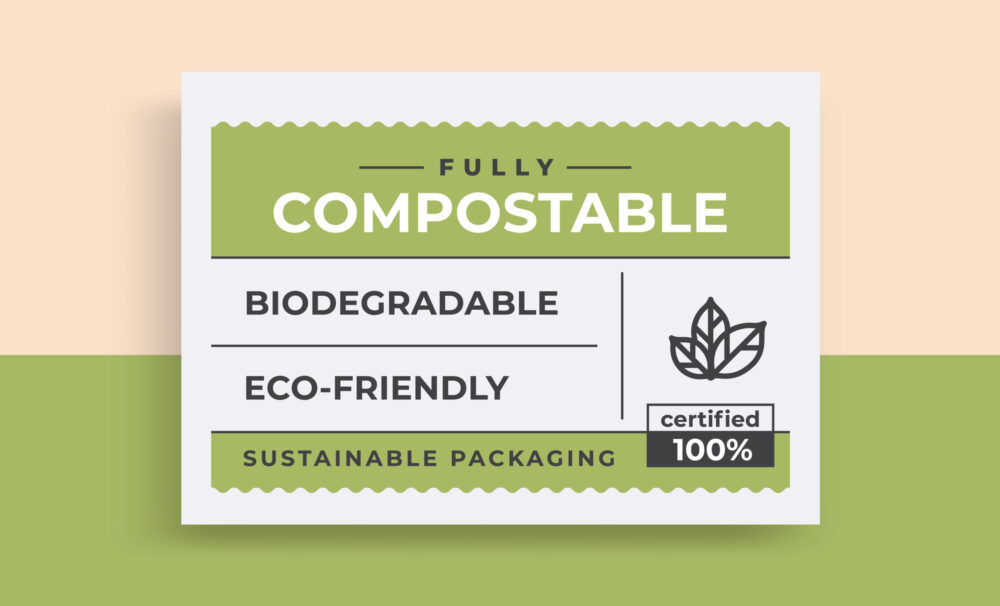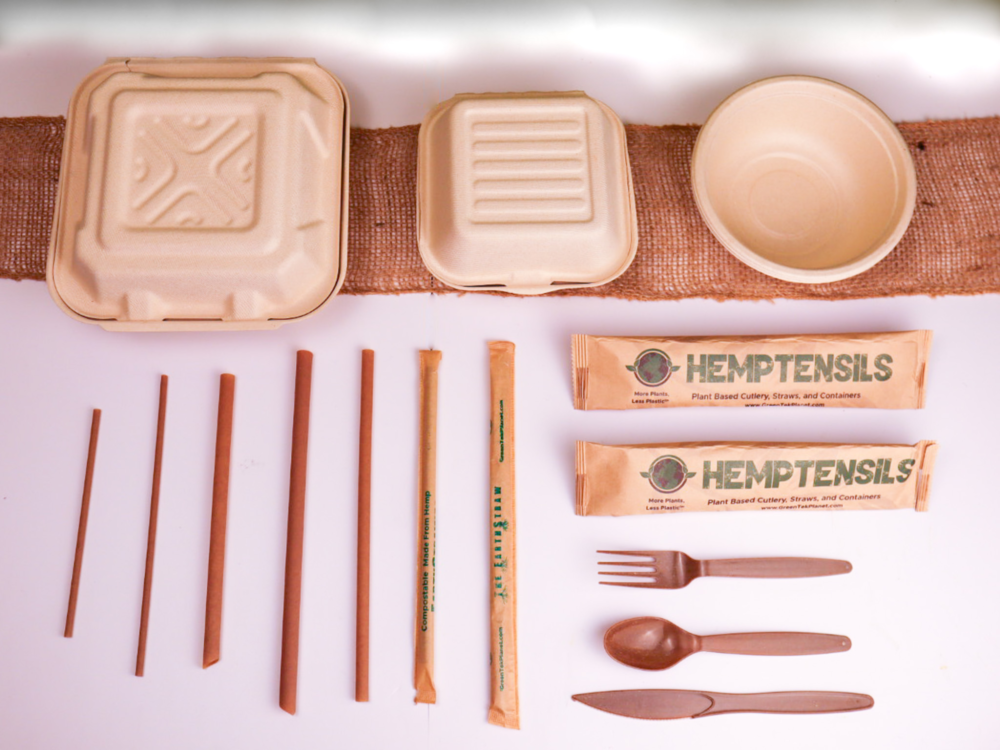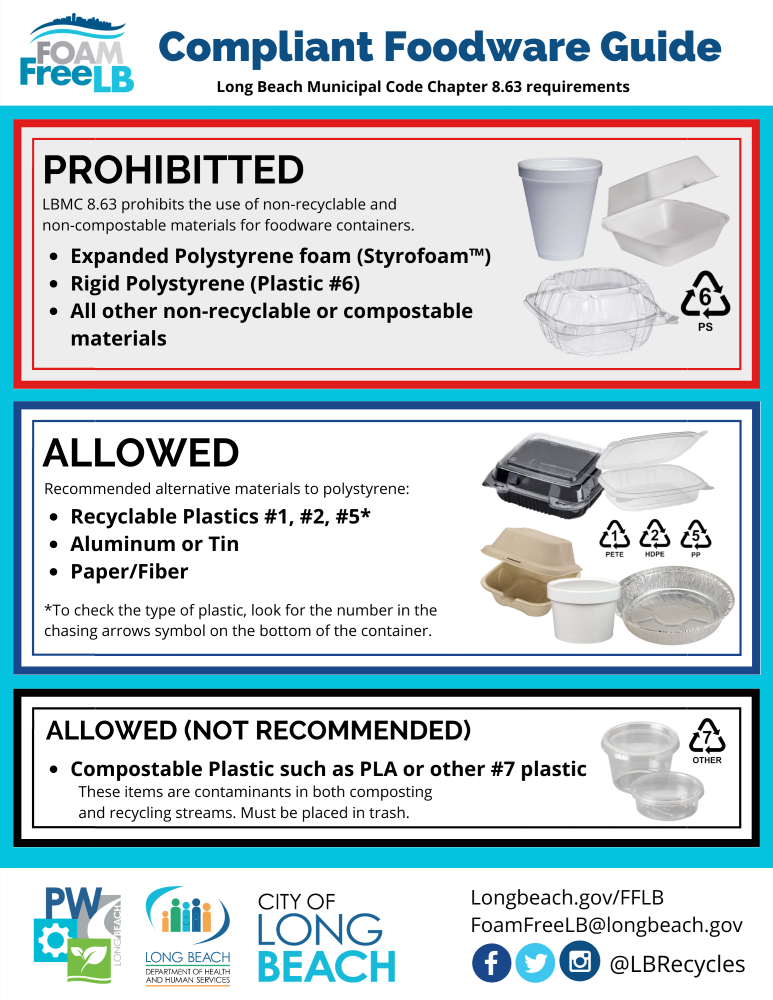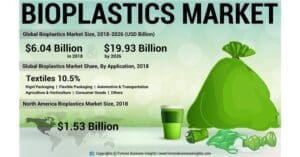
Understanding the Bioplastics Market
The bioplastics market is gaining momentum, with growth projections pointing towards a bright future. Experts forecast more than 15% expansion over the next five years.
Projected Growth of the Bioplastics Market
A closer look at this booming industry reveals a predicted Compound Annual Growth Rate (CAGR) of 14.21% through to 2027. It’s not every day that an industry shows such promise, so let’s explore why this surge in growth is expected.
To start off, consider sustainability: as we all strive for greener choices, industries have started to follow suit. This trend has helped fuel demand for sustainable materials like bioplastics – imagine swapping out traditional plastic utensils at your favorite fast food joint with ones made from plant-based alternatives. The appeal is obvious and enticing.
But it doesn’t stop there; further advancements in technology are opening up new possibilities too. Ever heard of hemp plastic? Made from one of nature’s most versatile plants – hemp, these plastics are stepping into the spotlight due to their exceptional sustainability credentials.
Key Players in the Bioplastics Market
No story would be complete without its heroes and heroines—enter key players driving forward the bioplastic revolution:
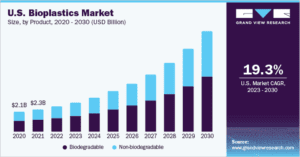
- NatureWorks,
- Braskem,
- Novamont,
- BASF,
- and many others.
This bunch includes giants known far beyond just the bioplastics market. Take BASF for instance, a multinational chemical company with a wide array of products under its belt. Or consider Braskem, Brazil’s largest petrochemicals company now making strides in sustainable plastics.
These big names are not just dipping their toes into this new realm; they’re diving headfirst and leading by example.
might be crossing your mind? Sure, this all looks promising. But what’s next?
The Origin and Applications of Bioplastics
Bioplastics are the green warriors in our battle against plastic pollution. But what exactly are they made from? And where can we use them?
Renewable Sources for Bioplastic Production
We create bioplastics from renewable biomass sources. These could be vegetable fats, oils, corn starch or even straw and woodchips. The variety of these sources is what makes bioplastics so attractive.
Say goodbye to fossil fuels and say hello to plants – that’s right, vegetable fats and oils, which often go waste after cooking your favorite fries, have a new purpose now. They form the building blocks for many types of biodegradable plastics.
Cornstarch is another superstar here – it’s used widely as a base for PLA (Polylactic Acid) type bioplastics. Not only does this give us more ways to use surplus crops but also offers an alternative to traditional oil-based plastics.
Woodchips may sound odd at first glance but believe me; these guys are rockstars too when it comes to making cellulose-based bio-plastics like cellophane.
Wide-Ranging Uses of Bioplastics
You’ll find bioplastic applications across industries thanks to their versatility. Hemp plastic, a sustainable variant, is already revolutionizing fields such as restaurant supplies manufacturing with its disposable items like packaging, crockery, and cutlery. Much more than just disposable dinnerware though, bio-plastics cater different needs in various sectors.
Let’s take the food packaging industry for example. Bioplastics can help keep our food fresh, and when we’re done, they can be composted right back into the soil without harming Mother Earth. This is a significant shift from traditional plastic packaging that often ends up in landfills or oceans causing environmental havoc.
In the medical field too, bioplastics are proving their worth by creating safer and more eco-friendly solutions like sutures and drug capsules.
Driving Forces Behind Bioplastic Market Growth
The growth of the bioplastics market isn’t accidental. It’s propelled by powerful forces, both regulatory and consumer-driven.
Government and Regulatory Influence
On one hand, we’ve got governments worldwide stepping up their environmental conservation efforts. They’re not just talking about it; they’re creating policies that push for greener alternatives like bioplastics.
A case in point is the European Union’s Plastics Strategy. This policy promotes circular economy principles, urging industries to reduce plastic waste while promoting sustainable options – such as hemp-based plastics. And guess what? It’s working. The strategy is a major force driving demand for products made from plant-based polymers.
We also have industry regulations encouraging companies to transition towards more sustainable practices. For instance, businesses are encouraged to shift away from conventional petroleum-derived plastics towards renewable materials – including those derived from corn starch or vegetable fats and oils. As a result, there’s been an uptick in interest for eco-friendly packaging solutions provided by companies like ours at Green Talk Blog who specialize in producing hemp plastic supplies.
Rising Consumer Awareness and Demand
But let’s be honest: all the government incentives wouldn’t make much difference if people weren’t on board with it too. That brings us to our second big driver: consumers themselves.
Folks today are more environmentally conscious than ever before – thanks Internet. Not only do they understand what climate change means (hello melting ice caps), but they’re ready to take action against it (goodbye single-use plastics).
Just like your high school crush who finally noticed you after a new haircut, consumers are noticing the charm of bioplastics. More people than ever are demanding sustainable products and practices. They’re eager to support businesses that prioritize the planet – companies that make efforts to reduce their carbon footprint.
This rising awareness has been reflected in purchasing decisions too – from choosing electric cars over gas-guzzlers to preferring eco-friendly packaging made from hemp plastics. In fact, these shifts in consumer behavior have contributed significantly towards boosting market growth for bioplastics.
Bioplastic Market Trends by Region
The bioplastics market is not uniform across the globe. Different regions have varying trends, driven by factors like governmental regulations, consumer awareness, and local industry needs.
North America’s Green Leap Forward
In North America, there’s a significant demand for sustainable alternatives to conventional plastic. This region has seen rapid growth in the bioplastics market due to strong government support and increasing public awareness about environmental issues.
Many states have even implemented laws encouraging the use of biodegradable products over traditional plastics. For instance, California’s post-consumer recycled content law sets a precedent for other regions.
Hemp-based plastics are particularly popular here because they offer an eco-friendly alternative without compromising product quality or functionality. Bioplastics, like hemp-based plastics, are often used in various industries such as food packaging and automotive manufacturing to provide an eco-friendly option without compromising product quality or performance.
Europe Leading with Strict Regulations
Moving eastward to Europe – this region leads when it comes to strict regulations on single-use plastics. A key player behind these policies is France which has enforced some of the most stringent rules around plastic usage globally through its “Anti-Waste Law for a Circular Economy”.
This regulatory environment fosters high demand for alternatives like hemp-based bioplastics that meet sustainability standards while still delivering on performance requirements – especially within packaging and agriculture industries.
Asia-Pacific’s Booming Bioplastic Market
The Asia-Pacific area is witnessing considerable expansion in the bioplastics sector, largely because of the intensifying industrialization and enlarging population. Countries like China and India have a burgeoning middle class that demands more sustainable products.
This demand isn’t just about consumer preference though; governments are stepping up too. Thailand, for example, has set ambitious goals to ban plastic waste imports by 2023, pushing local industries towards greener alternatives.
FAQs in Relation to Global Bioplastics Market Growth and Trends
What is the market trend in bioplastics?
The bioplastics market shows a strong growth trajectory, with increased use of renewable resources and surging consumer demand for sustainable products.
How big is the global market for bioplastics?
The global bioplastics market is booming, expected to grow more than 15 percent over the next five years.
Why is there a growing demand for bioplastics?
Rising environmental awareness among consumers coupled with supportive government policies are key drivers behind increasing demand for bioplastics.
Are bioplastics becoming more popular?
Absolutely. Bioplastic popularity continues to rise due to their versatility across sectors and commitment towards sustainability goals.
Conclusion
The global bioplastics market growth and trends are as dynamic as they come. It’s evident that there is an expanding interest for eco-friendly, vegetable-based materials.
From this journey, we’ve learned how key players like NatureWorks and Braskem are shaping up the industry. They’re not just making a difference but driving it forward too.
We now understand that renewable biomass sources are central to bioplastic production. We see their wide-ranging uses in our everyday lives – from cutlery to packaging!
Lastly, government policies and rising consumer awareness? They aren’t just contributing factors; they’re strong propellants of this market boom!
This isn’t simply about replacing plastics; it’s about championing a more sustainable future through smart choices today.
Learn more about GreenTek Products.



